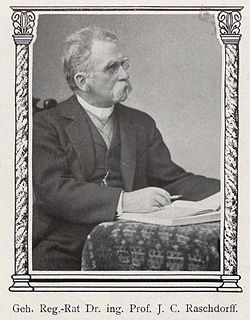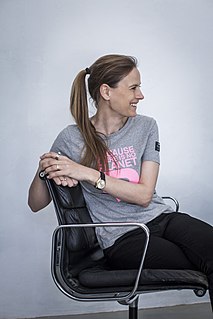Related Research Articles

Sociology of architecture is the sociological study of the built environment and the role and occupation of architects in modern societies.
Stefan Weber is a German Orientalist and director of the Museum of Islamic Art at the Pergamon Museum in Berlin, Germany. Previously, he was assistant professor of material history at the Institute for the Study of Muslim Civilisations of Aga Khan University in London.
Noureddin Kianouri was an Iranian construction engineer, Urban planner Professor of Bauakademie der DDR in Berlin and a communist political leader. He studied first at University of Tehran till 1934and later in Germany from 1934 to 1939. Before his return to Iran he practiced architecture as well though he is mostly remembered as a construction engineer in Munich office of Philipp Holzmann. About a year after foundation of Tudeh Party he joined the party with the membership number 444 on may 1942. Later he became one of the influential members of the Central Committee for the communist Tudeh Party, Following the 1953 Iranian coup d'état the party was banned and Kianouri was imprisoned. He fled, and lived in Italy and later East Germany; under the pseudonym "Dr. Silvio Macetti" he was an influential architect and theorist of socialist architecture and city planning.

Vittorio Magnago Lampugnani is an architect, architectural theorist and architectural historian as well as a professor emeritus for the History of Urban Design at the Swiss Federal Institute of Technology Zurich. He practices and promotes a formally disciplined, timelessly classic, and aesthetically sustainable form of architecture, one without modernist or postmodernist extravagances. As an author and editor of several acclaimed works of architectural history and theory, his ideas are widely cited.

Michael Trieb was a German architect, urban planner (SRL) and university professor. He was head of the Department of Urban Design at the Urban Planning Institute at the University of Stuttgart and is now Managing Director of the ISA Group - ISA Internationales Stadtbauatelier.

Michael Matheus is a German historian.
Professor Jeremy Till is a British architect, educator and writer. He was appointed as Head of Central Saint Martins and Pro Vice-Chancellor of the University of the Arts London in 2012.
Irene H. Schöne has a PhD in politics and economics and has spent a career working in environmental economics, as well as writing and speaking on these issues.
Feministische Organisation von Planerinnen und Architektinnen is an organisation working to address gender issues in the built environment generally and among professionals active in this field.

The Institute for the History and Theory of Architecture is a teaching and research institute at the Department of Architecture of ETH Zurich, situated on the ETH Zurich’s Hönggerberg Campus site.

Kurt Liebknecht was a German architect. After 1937 he pursued his career as a Soviet architect, except during a hiatus of eighteen months spent in a Soviet jail as a suspected spy.
Conny Restle is a German musicologist, Museum director and lecturer at the Berlin University of the Arts.
Rudolph Angermüller is a German musicologist, who rendered great services to Mozart studies in particular.
Claudia von Werlhof is a German sociologist and political scientist. She held the first professorship for women's studies in Austria, based at the Institute for Political Science at the University of Innsbruck.
Arnold Bartetzky is a German art historian and freelance journalist.

Walter Moser is a Swiss architect. Since 1960 he has worked on sixteen new churches and church complexes in the modern sacral style. Although he is chiefly known for his work for the Roman Catholic church, he has also worked on a number of secular public buildings and developments, and carried out many renovation and restoration projects on "historical" churches in German-speaking German speaking central and eastern Switzerland.

Ulrich Menzel is a German political scientist.

Udo Mainzer is a German art historian and monument conservator. He held office until September 2011. as director of the LVR-Amt für Denkmalpflege im Rheinland and Landeskonservator of the Landschaftsverband Rheinland.

Julius Carl Raschdorff was a German architect and academic teacher. He is considered one of the notable architects of the second half of the 19th century in Germany and created his most important work with the Berlin Cathedral.

Silke Langenberg is a German-Swiss heritage scientist and architect. She is a full professor of construction heritage and preservation in the department of architecture at ETH Zurich.
References
- ↑ "Institutsprofil". Institut für Geschichte und Theorie der Architektur und Stadt. Retrieved 12 September 2018.
- ↑ "Prof. Dr. Tatjana Schneider". Institut für Geschichte und Theorie der Architektur und Stadt. Retrieved 12 September 2018.
- ↑ "Dr. Tatjana Schneider". University of Sheffield. Retrieved 26 September 2016.
- ↑ "Catalogue record for thesis". Copac . Retrieved 26 September 2016.
- 1 2 "Tatjana Schneider". Creative Economy: People. British Council. Retrieved 26 September 2016.